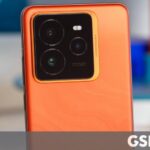The new F7 series of Poko lacks the vanilla model – there are only pro and ultra versions. And as long as the money is worth (the key sales point of the brand), some believe that the POCO X7 is better than the Pro F7 Pro.
Right now, the Poko X7 Pro starts at € 320 and you can add 4GB of RAM to € 20, double the storage is another € 20. When not quite a flagship chip, the dementia 8400 Ultra is unique with its eight cortex-A725 cores. Also, the display is quite premium with 1220p+ resolution, 12-bit colors, HDR 10+ and Dolby Vision support.
There is a plastic frame downgrade compared to the F7 Pro, but this model has an IP IP rating, IP69. Camera Mero is nothing special (50 MP1/1.95 “main, 8MP ultra-wide and 20MP selfie), but it is not far from the F-phone.
Before settling on the X7 Pro, you should consider the old Poko F6. With Snapdragon 8S General 3, the phone is not as fast as the X7 Pro, but still has its own. And it has the same display and the same camera system. The battery is low at 5,000 mAh (still with 90W charging) and water resistance is a very basic IP64. Given the difference of $ 20 between the two, we will go with the new X7 Pro.
There is also Vanilla Poko X7, which is about € 70 cheaper than Pro. It’s nice and everything, but dementia 00 73 00 is a major downgrade in terms of ultra influence (and it is up to UFS 2.2 storage, compared to UFS 4.0 on Pro), plus battery has a capacity of 5,110 mAh and charged at 45 W. Displays and cameras are the same, but the loss of influence is leaned towards us.
Last year, Apple Pal introduced new iPad air tablets with the M2 chip, then refreshed them with M3-based models this year. IPados does not make the best use of additional display, however, unlike Macos, so you will not see the big difference between two pay generations.
Based on the iPad AIR 13 (2024) storage tire, the equivalent is from € 125 to 30 230 than the 2025 model. Perhaps, you want additional storage than additional performance.
Similarly, small iPad Air 11 (2024) is € 120- € 160 cheaper than its new siblings.
If you prefer Android tablets, both Xiaomi Pad 7 and Pad 7 Pro are off € 70. Both have 11.2 “IPS LCD (144 Hz, 12-Beat, Dolby Vision) with stylus support, quad speakers and 8,850mAh batteries. The primary difference is in the chipset-Pro-Snapdragon 7+ General 3 and Snapdragon 8S General 3.
Pro also has a better camera (back: 50MP vs. 13MP, Front: 32MP vs 8MP) and fast charging (67W vs. 45W), but it costs € 50 more. In terms of performance, despite the upper class of the chip, Pro has only a little lead.
Finally, the Amazon Fire Max 11 is a great streaming tablet that can also be used for work and light gaming. It has a good quality 11 “IPS LCD (2,000 x 1,200px, 60 Hz) and stereo speakers. Storage is wide, if you prefer streaming local media. Note that this version contains ADS, but you can get rid of € 15 additional.
We can get a commission from qualifying sales.






